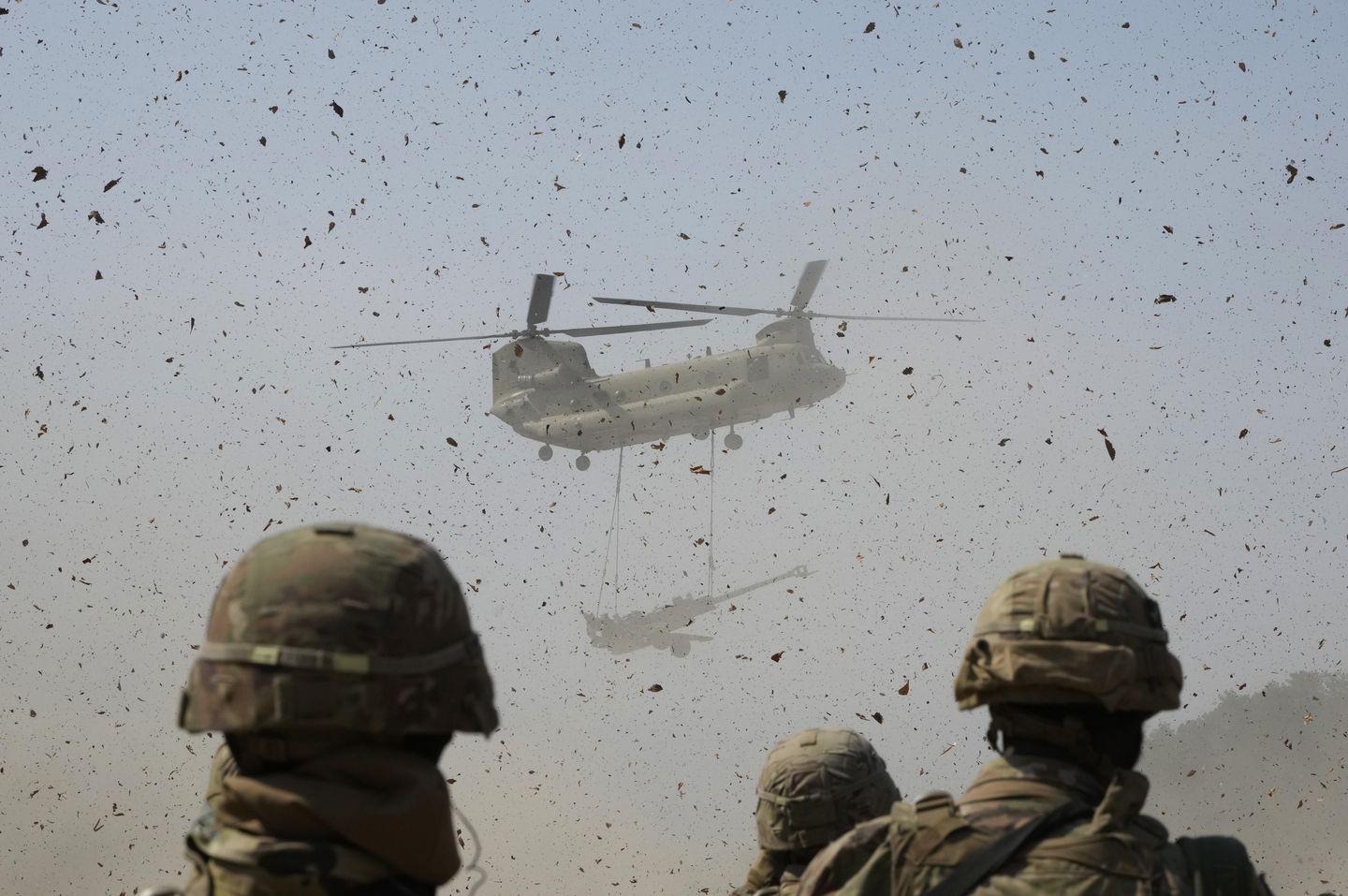
It was born in the 1960s, and it looks like a flying school bus. But in a world of ultramodern, lethal Apaches and deadly Black Hawks, the U.S. military’s dependable workhorse helicopter is — and is likely to remain — the venerable Chinook.
The Army’s CH-47 Chinook was introduced in 1962, and for most advanced military aircraft that might mean it’s time to retire. But the Chinook has proven so versatile and so dependable, the helicopter is expected to continue serving U.S. forces for several decades. In March, the Army Special Operations Command gave Boeing a $250 million contract to provide it with five more Chinooks.
The Chinook was designed to haul the nuclear MGR-1 Honest John missile during the Cold War between the U.S. and the former Soviet Union.
But it later became the U.S. military’s primary cargo carrier during America’s 20-year conflict in Afghanistan.
The Chinook may look like a bus, but it’s the fastest helicopter in the U.S. military. It has a top speed of almost 200 mph and will leave others in the dust, former CH-47 pilots say.
“If we go straight and level, nothing can keep up with us,” said Mark Ballew, a former Chinook pilot now working for Boeing, which manufactures the helicopters. “It gives you the opportunity to go out and get in locations and positions you can’t get in with a normal helicopter.”
A CH-47 Chinook helicopter typically seats 33 troops plus a three-member crew. But Mr. Ballew said you can always squeeze in a few more passengers if necessary.
“I personally have had 115 in the back. They weren’t necessarily comfortable, but they were happy to be going where I was taking them,” he said.
On Nov. 10, 2003, now-retired Army Chief Warrant Officer 3 Larry Murphy was at the controls of his CH-47, call sign Yankee 2-6, when the crew received a call to help a group of U.S. troops who were on the ground in northeastern Afghanistan.
Their destination was an Afghan village narrowly perched on the side of a steep mountain at an elevation of about 8,500 feet. Soldiers from the Army’s 10th Mountain Division had captured suspected Taliban fighters and needed them flown to Bagram Airfield.
With no suitable landing zone in the village, Mr. Murphy and his co-pilot, Chief Warrant Officer 3 Paul Barnes, gently set down the helicopter’s two rear wheels on the roof of a small house while keeping the front wheels hovering. It allowed the U.S. soldiers to quickly load the detainees into the back of the aircraft.
“We didn’t even think anything of it. It was just another day in the life of a Chinook,” Mr. Murphy recalled in an interview with The Washington Times. “It was something that was well within its capability. A two-wheel landing, or pinnacle [landing], is something we did all the time in practice.”
He gave much of the credit for the successful landing to the enlisted crew in the back, especially the flight engineer on the helicopter’s back ramp, who was providing him with verbal directions.
“He was saying, ‘Down two, left one,’ and gets me where he wants me to be. Then he takes me down, you know, ‘3-2-1 contact.’ And that was that,” Mr. Murphy said.
An Army photographer embedded with the U.S. troops snapped a photograph of the risky helicopter mission that became one of the most iconic images of the 20-year conflict in Afghanistan.
Mr. Murphy was in the Pennsylvania Army National Guard in Afghanistan. He flew Chinooks for 20 years in the Guard, calling them “awesome, awesome aircraft.”
The CH-47 is distinguished from other aircraft in the fleet by the twin fore-and-aft rotors and engines that are twice as powerful as those in the UH-60 Black Hawk, for example. The Chinook doesn’t require a tail rotor to counteract torque, a twisting force that tends to cause rotation, and help maintain directional stability. That means all the engine power in the CH-47 can focus on its heavy-lift capabilities.
The Chinook can fly at up to 20,000 feet, which made it the only U.S. military helicopter capable of crossing some of the rugged mountain ranges in Afghanistan.
“I’ve done missions on Mount St. Helens [in Washington state] where we’ve taken weather radar equipment to set it up in the higher altitudes,” Mr. Ballew said. “Troop insertions, cargo resupply, [medical evacuations] — you can do a lot of different missions with the aircraft.”
The CH-47 has been modified over the years with more powerful engines and transmissions. The analog gauges that early Chinooks relied on have been replaced with computer screens comparable to the most modern aircraft.
“But the basic maneuvers you would have to do as a helicopter pilot are kind of the same,” Mr. Ballew said.
Its power and combat-proven reliability have resulted in a large international market for the CH-47. Officials at Boeing said at least 20 other countries around the world are flying Chinook helicopters, including India, which relies on them for its high-altitude missions in the Himalayas.
The U.S. military has no plans to put the Chinook out to pasture, as the March contract for modified MH-47G Block II aircraft demonstrates. Pentagon officials said it could very well join the ranks of other iconic aircraft like the B-52 and the C-130 and fly for 100 years before retirement.





![Stephen A. Smith Goes Ballistic on DeMS-13 Senator Van Hollen [WATCH]](https://www.right2024.com/wp-content/uploads/2025/05/Stephen-A-Smith-Goes-Ballistic-on-DeMS-13-Senator-Van-Hollen-350x250.jpg)
![AZ Officer Rescues Fire Captain’s Daughter from Burning Car in Dramatic Video [WATCH]](https://www.right2024.com/wp-content/uploads/2025/05/AZ-Officer-Rescues-Fire-Captains-Daughter-from-Burning-Car-in-350x250.jpg)
![Donald Trump Pardons ‘Century Men’ During West Point Commencement Speech [WATCH]](https://www.right2024.com/wp-content/uploads/2025/05/Donald-Trump-Pardons-‘Century-Men-During-West-Point-Commencement-Speech-350x250.jpg)

![Minnesota Officials Panicking Over Derek Chauvin Pardon Speculation, Potential Unrest [WATCH]](https://www.right2024.com/wp-content/uploads/2025/05/Minnesota-Officials-Panicking-Over-Derek-Chauvin-Pardon-Speculation-Potential-Unrest-350x250.jpg)







